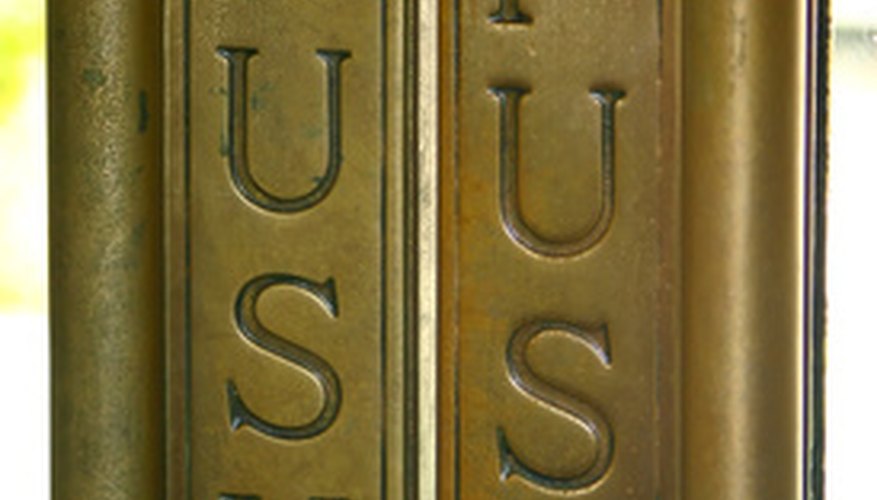A finger plate is a protective piece of metal or some other material attached to a door to protect the surface from dirty fingers. Also known as "push plates" or "door plates," they range from the very simple to the very ornate, and they can be used on most kinds of solid doors.
Placement
A finger plate is placed on the edge of the door that swings, opposite from the hinge side. It's placed where people would commonly place their hand--about elbow to shoulder height for a typical adult.
Uses
Finger plates are particularly common on free-swinging, unlatched doors. Since such doors have no knobs or levers, everyone who uses them must put a hand on the door surface to push it open. Over time, with the touches of hundreds or thousands of hands, grime will build up. A door plate helps keep that grime off painted finishes.
Knobbed doors can also have finger plates. If a door is prone to sticking, it may require an extra push at the top to shut it completely. And when you want to pull open such a door, you may want to keep a hand on the top half of the door as you tug the knob, lest the door suddenly come unstuck and hit you in the face. A finger plate will help protect the surface of the door in these instances--and may even serve as a hint to people using the door.
- Finger plates are particularly common on free-swinging, unlatched doors.
- A finger plate will help protect the surface of the door in these instances--and may even serve as a hint to people using the door.
Materials
Because their purpose is essentially to collect grime, finger plates need to be made of a material that's easy to clean. Metals are most common, especially brass and copper but also stainless steel. Finger plates can be glass, plastic and even polished wood. To prevent tarnishing, metal finger plates can be treated with a clear lacquer.
- Because their purpose is essentially to collect grime, finger plates need to be made of a material that's easy to clean.
- To prevent tarnishing, metal finger plates can be treated with a clear lacquer.
Styles
Finger plates can be thin and flat--as most are--or they can be thick and heavy and bear intricately carved designs. On swinging doors, "Push" will often be inscribed into the plate itself.
Consideration
A key consideration in selecting a finger plate is the style of the door on which you wish to use it. If it's a flat door, you can use just about any plate you want. With a panelled door, however, make sure that the plate you choose will fit on the stile--the vertical piece of wood along the edge of the door. You don't want a plate that hangs off the edge of the stile.
- A key consideration in selecting a finger plate is the style of the door on which you wish to use it.
- With a panelled door, however, make sure that the plate you choose will fit on the stile--the vertical piece of wood along the edge of the door.
